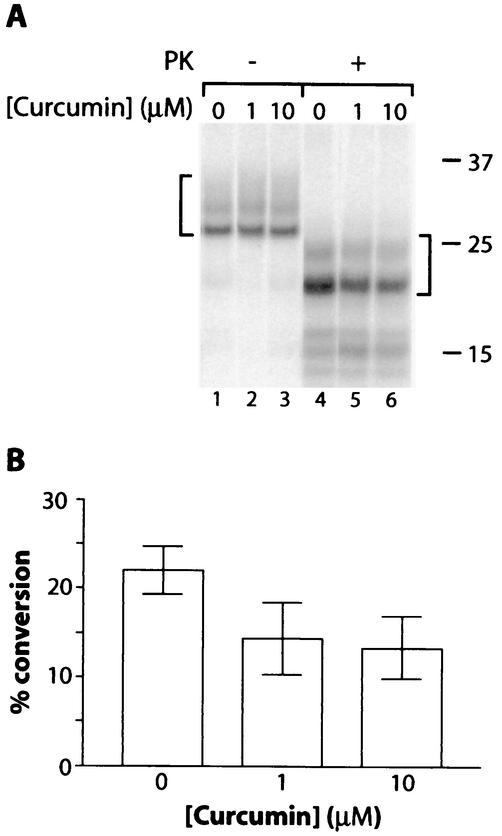FIG. 4.
Curcumin inhibition of the cell-free conversion of 35S-PrP-sen to the protease-resistant state. (A) Cell-free PrP conversion reactions between Syrian hamster 35S-PrP-sen and PrP-res were as described previously (6) except for the presence of the indicated concentration of curcumin. Briefly, hamster 35S-PrP-sen lacking a glycophosphatidylinositol anchor (20,000 cpm) was immunoprecipitated from fibroblast cells and incubated with PrP-res that had been isolated from the brains of 263K scrapie-infected hamsters and pretreated with 2 M guanidine HCl (6). The final conditions of the conversion incubation were 300 nM PrP-res, ∼5 nM PrP-sen, 0.5 M guanidine hydrochloride, 50 mM sodium citrate [pH 6.5], 1 mM cetyl pyridinium chloride, 0.6% N-lauroyl sarkosine, and 37°C. The formation of 35S-PrP-res (marked by the right bracket) was detected by treating 90% of the reaction equivalents with PK (10 μg/ml) for 1 h at 37°C, followed by the inactivation of the PK with Pefabloc (Boehringer Mannheim), methanol precipitation, and SDS-PAGE analysis as described previously (6). The remaining 10% of the reaction mixture was analyzed without PK digestion to show the input 35S-PrP (left bracket). (B) Quantitation of the proportion of input 35S-PrP-sen converted to the PK-resistant form (% conversion). Values are means ± SD (n = 3).

